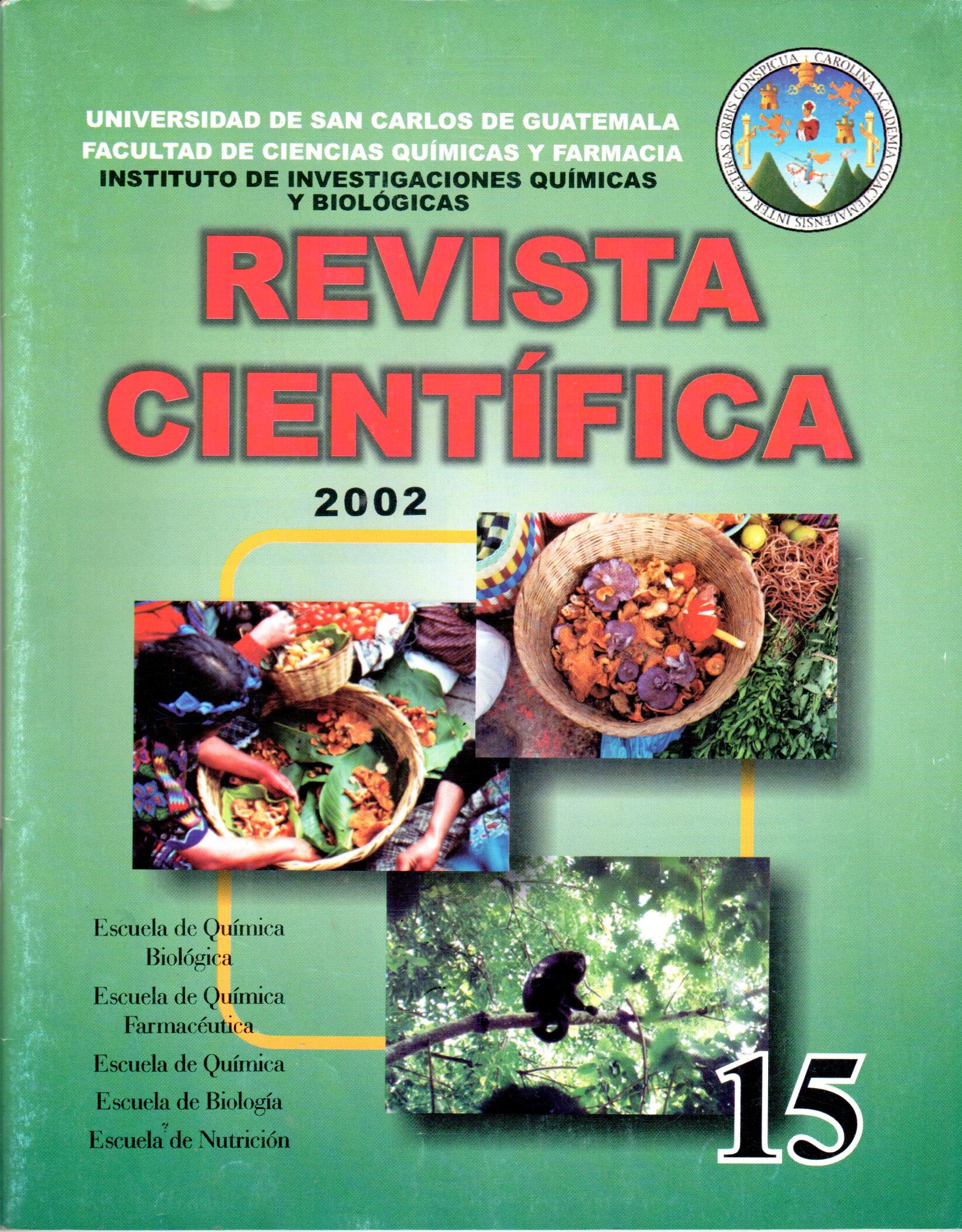Estudio Etnomicológico de la cabecera municipal de Tecpán Guatemala, Chimaltenango
DOI:
https://doi.org/10.54495/Rev.Cientifica.v15i1.252Palabras clave:
Estudio Etnomicológico, la cabecera municipal, Tecpán Guatemala, ChimaltenangoResumen
Los estudios etnomicológicos en Guatemala son escasos. Son muy pocos los que documentan las costumbres, tradiciones, conocimientos y nomenclatura de los hongos en las diferentes ctnias que habitan el país. Para contribuir al reconocimiento de ésta riqueza cultural y biológica, se desarrolló este trabajo en una de las poblaciones más importantes de] área Kaqchikel del altiplano guatemalteco. Se entrevistó a buscadores de hongos y se realizaron colectas en los bosques de pino y encino del lugar. También se visitó el mercado municipal los días jueves y domingos, para adquirir las especies de hongos comestibles que estuvieran a la venta. Se realizó además una encuesta a una muestra de escolares y adultos residentes en el lugar de estudio, para determinar el conocimiento general que la población poseía acerca de los hongos. Se recabó importante y valiosa información sobre el concepto de hongo, la ecología, fenología, morfología, nomenclatura, clasificación tradicional, hongos comestibles, medicinales y tóxicos. Existen 38 nombres en Idioma Kaqchikel y 21 en idioma Español. Los nombres de los hongos son asignados ya sea por el hábitat que ocupan o por comparación con elementos del medio, tales como frutos, animales, aves y otros. A través del análisis de la nomenclatura se establecieron los géneros tradicionales. La clasificación tradicional de los hongos se basa en la utilidad de éstos y su uso en la alimentación. Los resultados de las encuestas fueron analizados por frecuencias y por análisis bivaridos, encontrándose que el conocimiento de los hongos en genera! en la población, es mayor en el género masculino que en el género femenino. También, la transmisión de dicho conocimiento es por género. En el grupo de buscadores de hongos la tendencia al mayor conocimiento de los hongos, se inclina hacia el género femenino, debido a que probablemente en este caso está implicada una ocupación que genera una fuente de ingresos adicional.Descargas
Citas
Estrada-Torres A. La Etnomicologia: Avances. Problemas y Perspectivas. Universidad Nacional Autónoma de México, Tesis predoctoral. México 1,989; 59p.
Lowy B. Ethomycological interferences from mushrooms stones, Mayan codices and Tzutuhil legend. Rev Inter 1.980, 10:90-103.
Logemann H, el al. Envenenamiento mortal por hongos en Guatemala. Rev MexMicol 1,987; 3:21 1-21 6.
Sommerkamp Y. Hongos Tóxicos y Alucinógenos de Guatemala. En: Memorias del 1 Congreso Centroamericano y 1 Congreso Nacional de Micología. Guatemala i ,992: p106- 108.
Sommerkamp Y. Hongos comestibles en los mercados de Guatemala. Universidad de San Carlos de Guatemala. Dirección General de Investigación. Guatemala 1.990 68p.
Herrera K. Estudio Etnomicológico en la región de Chipotón Sacatepéquez. Guatemala: Universidad de San Carlos de Guatemala, (Tesis de Graduación, Facultad de Ciencias Químicas y farmacia). 1,991; 92p.
Ohi y Torres, Piedras-Honuo. Museo Tabaco y Sal. Japón 1,994.
Flores R. et al. Hongos Ectomicorrícicos asociados a.Abies guatemaleasis. Pinas ruáis y Pinas ayacahuite de la Sierra de los Cuchumatanes y su aprovechamiento para la producción de planta forestal micorrizada (Fase I). Universidad de San Carlos de Guatemala, Dirección General de Investigación. Guatemala 1,999; 23p.
Flores R, et al Hongos Ectomicorrícicos asociados a Pinas en Poptún, Peten, Guatemala. En: Memorias del V Congreso Científico Latinoamericano de Estudiantes de Farmacia. IV Congreso Nacional del Colegio de Farmacéuticos y Químicos de Guatemala y V Semana Científica de la Facultad de Ciencias Químicas y Farmacia. Guatemala 1,999,
Argueta J. Estudio de los macromicetos de la ciudad de Guatemala, Mixco y San Juan Sacatepéquez. Guatemala Universidad de San Carlos de Guatemala, (Tesis de Graduación, Facultad de Ciencias Químicas y Farmacia
,983; 86p.
Berlin B. Speculations of the growth of ethnobotanical nomenclature in folk biology. Jour Lang Soc 1,972; 1:63-98, https://doi.org/10.1017/S0047404500006540 DOI: https://doi.org/10.1017/S0047404500006540
Escalante R. Ethnomy colog teal data of the matlatzinca Departamento de lingüistica. INAH. México 1,973.
Herrera T., Ulloa M. El Reino de los Hongos. México UNAM, Fondo de Cultura Económica. 1,998. p426-430.
Descargas
Publicado
Cómo citar
Número
Sección
Licencia
Derechos de autor 2002 O. Morales, R. Flores, B. Samayoa, M.C. Bran

Esta obra está bajo una licencia internacional Creative Commons Atribución 4.0.
Los autores/as que publiquen en esta revista aceptan las siguientes condiciones:
- Los autores/as conservan los derechos de autor y ceden a la revista el derecho de la primera publicación, con el trabajo registrado con la licencia de atribución de Creative Commons 4.0, que permite a terceros utilizar lo publicado siempre que mencionen la autoría del trabajo y a la primera publicación en esta revista.
- Los autores/as pueden realizar otros acuerdos contractuales independientes y adicionales para la distribución no exclusiva de la versión del artículo publicado en esta revista (p. ej., incluirlo en un repositorio institucional o publicarlo en un libro) siempre que indiquen claramente que el trabajo se publicó por primera vez en esta revista.
- Se permite y recomienda a los autores/as a compartir su trabajo en línea (por ejemplo: en repositorios institucionales o páginas web personales) antes y durante el proceso de envío del manuscrito, ya que puede conducir a intercambios productivos, a una mayor y más rápida citación del trabajo publicado.









